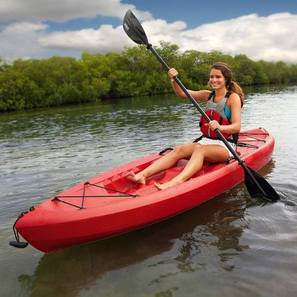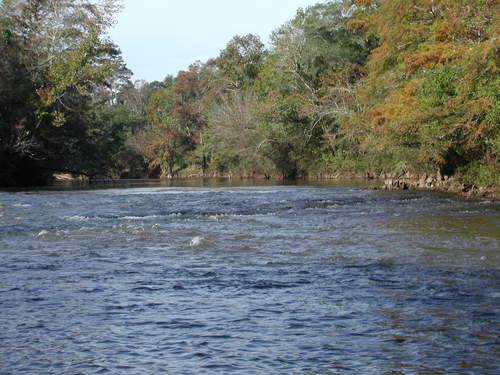Thank you to Mike Gurspan and WTVY for the excellent coverage on Pea River Outdoors!
|
Mark your calendar for April 17th - 19th for this joint project with Restoration 154 and the Elba Chamber of Commerce. Stay tuned for more information on this upcoming event in Elba!
Let's go on a romantic sailboat ride, they said. It'll be fun, they said. ... Enjoy this sneak peek from Sunday night's all new AFV! 7/6c on ABC
 Image of the Tennessee River courtesy of Kayla Terry Image of the Tennessee River courtesy of Kayla Terry The Pea River is 154 miles of the estimated 77,000 miles of river and stream channels representing the state's 17 major river systems, that are carved into Alabama's landscape. Learn more about Alabama's river systems and watersheds here: http://www.encyclopediaofalabama.org/article/h-1627  Lean Back Rest your back comfortably on the seat - this keeps the boat stable. Your movement should come from your torso. The Grip With both arms comfortably in front of you take the paddle in both hands - over-handed with thumbs under. As a general guide, line up your knuckles with the upward blade edge. Pull and Push Each paddle stroke is a pull with your downward stroke while the upward arm pushes the paddle shaft away from you. This combined effort distributes the work. Keep your arm comfortably in front of you (like bicycling). No need to hold on too tight - you'll find the rhythm. Leaning your arms too far forward and over extending your waist will just give you back and shoulder aches. Instead - since your torso muscles are stronger than your arm muscles, get used to using your torso to turn into the stroke - side to side. This lends more power to the stroke and saves on your arm muscles. As you change sides the paddle shaft should comfortably rotate to line up your knuckles with the upward blade - sweeping the water to the end of the kayak. You've reached your goal when you get these three elements all working together without thinking about it. Pull/Push - torso turning into the stroke - steadily sweeping the water. Utopia! If you don't get this at first - keep at it - don't worry - paddling techniques are learned with repetition. Paddling is rhythmical - it should feel like an extension of your upper body and flow without thinking about it. Once you're "not thinking about it" your whole body is relaxed and paddling is effortless - in harmony with the kayak. Turning the Kayak Turning your kayak is easy. You can turn by simply paddling only one side - opposite of the side you want to turn into. You can turn quicker by placing your paddle in a vertical direction into the water on the side that you want to turn to. Once you are headed where you want to be - resume paddling. You can make the kayak go backwards by first slowing the kayak to almost a stop and reverse your paddling direction. Getting in and out of a kayak is probably what most beginners fear the most. It can be awkward and challenging, but here's how to do it with ease.
The key is keeping your weight low and centered. At the dock: * Untie the kayak and keep the line in your hand * In shallow water you can lift your paddle vertically - set one end into the bottom of the water snug against the kayak side steady it. If you're in deeper water lay your paddle within reach and you'll use the dock edge to steady you. * Sit on the dock edge dangling your legs over and balance the cockpit edge with your feet to line up your entry position - drop the tie line into the cockpit. * Using the dock edge to steady you, swing one foot then quickly the other into the center of the cockpit - quickly crouch down - then sit. * Take your paddle in your hand, rest it across the cockpit and adjust the tie line so it won't drag when you paddle. Upon return, exiting is basically the same in reverse  Do you need more room in your garage? Do you have a kayak or canoe taking up space? Do you want it gone, but still want to be able to use it from time to time? Pea River Outdoors is accepting damage-free kayak and canoes in exchange for a one year pass. We need more boats to accommodate groups and you need more space. It's a win-win. If you'd rather sell it to us, show us what you have and your asking price.  A Sit On Top Kayak is ideal for a beginner or really any paddler. They are really fun and easy to use. There's little to think about here - a Sit On Top is simply an open hull (a paddleboard) with a seat that, as the name indicates . . . you sit on top of! They are easy to keep upright because they have a wider beam. This extra width makes them more stable. If they do flip they will upright easily because there is no enclosed cockpit to get swamped and the rotomolded type seals air inside making it naturally light and buoyant. Sit On Tops are so popular that they account for almost one third of all the kayaks sold today, and are used all the time here at Pea River Outdoors! They are manufactured in solo or tandem designs. Some designs have bulkheads built in for storage, though it's minimal. They are typically manufactured in plastic (rotomolded) or fiberglass which makes them very low maintenance, light weight and durable. You will love to Pea with a Sit On Top Kayak! Our singles are $28 for the day. |
Archives
July 2015
Categories
All
|







 RSS Feed
RSS Feed
